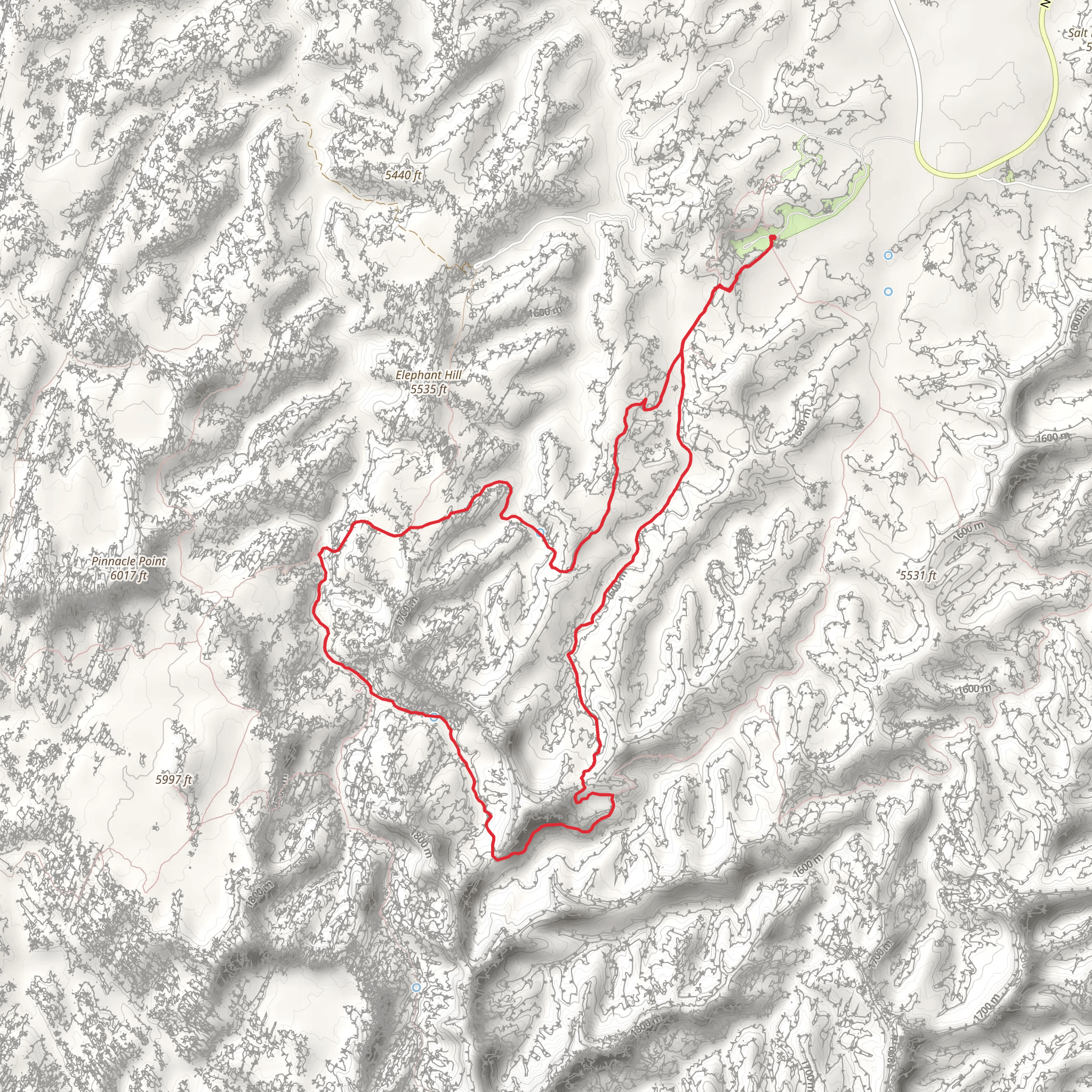
Download
Preview
Add to list
More
15.3 km
~4 hrs 3 min
600 m
Loop
“Embark on a captivating 15 km loop through Canyonlands' stunning landscapes and rich history, starting at Squaw Flat.”
Starting your adventure near San Juan County, Utah, the Big Spring Canyon Trail and Elephant Canyon Trail loop offers a captivating journey through the heart of Canyonlands National Park. This 15 km (approximately 9.3 miles) loop trail features an elevation gain of around 600 meters (about 1,970 feet), making it a moderately challenging hike suitable for those with a reasonable level of fitness.### Getting There To reach the trailhead, you can drive to the Needles District of Canyonlands National Park. If you're using public transport, the nearest major city is Moab, Utah. From Moab, you can rent a car or arrange for a shuttle service to the park. The trailhead is located near the Squaw Flat Campground, which is a well-known landmark in the area.### Trail Overview The trail begins at the Squaw Flat Campground, where you can find parking and basic amenities. As you set off, you'll quickly find yourself immersed in the stunning desert landscape that characterizes this region. The first section of the trail takes you through Big Spring Canyon, a picturesque area filled with towering rock formations and vibrant desert flora.### Significant Landmarks and Nature About 3 km (1.9 miles) into the hike, you'll encounter the first significant landmark: a series of impressive sandstone spires that rise dramatically from the canyon floor. These formations are a testament to the erosive power of wind and water over millions of years. Keep an eye out for the diverse plant life, including juniper trees, pinyon pines, and various cacti species.As you continue, the trail ascends gradually, offering panoramic views of the surrounding canyons and mesas. Approximately 5 km (3.1 miles) in, you'll reach a high point with an elevation gain of around 300 meters (984 feet). This vantage point provides a perfect opportunity to take a break and soak in the breathtaking scenery.### Wildlife and Ecology The area is home to a variety of wildlife, including mule deer, desert bighorn sheep, and numerous bird species such as ravens and red-tailed hawks. Early morning or late afternoon hikes increase your chances of spotting these animals. Be sure to carry binoculars if you're interested in birdwatching.### Historical Significance Canyonlands National Park is rich in history, with evidence of human habitation dating back thousands of years. The ancestral Puebloans once lived in this region, and you may come across ancient petroglyphs and pictographs on rock walls along the trail. These historical artifacts offer a glimpse into the lives of the people who once called this rugged landscape home.### Navigation and Safety Navigating the trail is straightforward, but it's always wise to carry a reliable map and compass. The HiiKER app is an excellent tool for this purpose, providing detailed maps and real-time navigation assistance. The trail is well-marked, but it's essential to stay on the designated path to protect the fragile desert ecosystem.### Final Stretch The final section of the loop takes you through Elephant Canyon, where you'll encounter more unique rock formations and possibly some small pools of water, depending on recent rainfall. The descent back to the trailhead is gradual, allowing you to enjoy the serene beauty of the canyon as you make your way back to Squaw Flat Campground.This trail offers a perfect blend of natural beauty, historical significance, and moderate physical challenge, making it a must-visit for any hiking enthusiast exploring Canyonlands National Park.
What to expect?
Activity types
Comments and Reviews
User comments, reviews and discussions about the Big Spring Canyon Trail and Elephant Canyon Trail, Utah.
4.53
average rating out of 5
17 rating(s)
